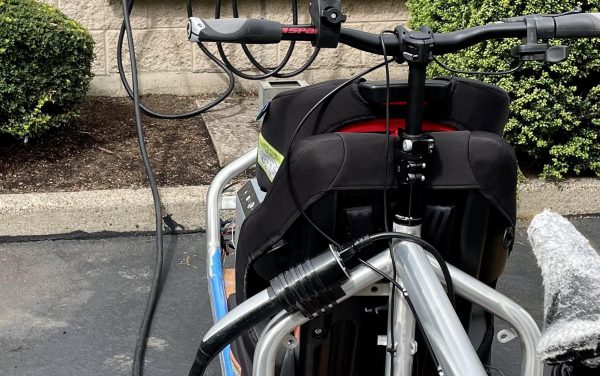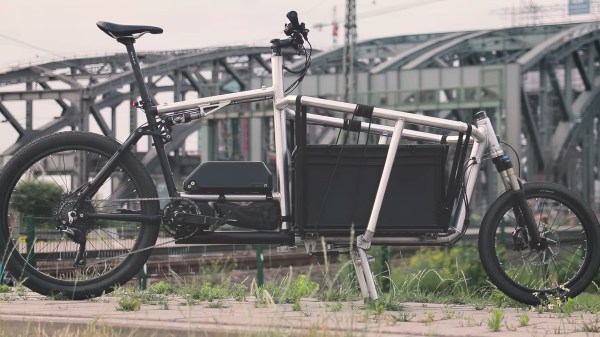Fast charging is all the rage with new electric cars touting faster and faster times to full, but other EVs like ebikes and scooters are often left out of the fun with exceedingly slow charging times. [eprotiva] wanted to change this, so he rigged up a fast charging solution for his cargo bike.
Level 2 electric vehicle chargers typically output power at 7 kW with the idea you will fill up your electric car overnight, but when converted down to 60 V DC for a DJI Agras T10 battery, [eprotiva] is able to charge from 20% to 100% capacity in as little as 7 minutes. He originally picked this setup for maxing the regen capability of the bike, but with the high current capability, he found it had the added bonus of fast charging.
The setup uses a Tesla (NACS) plug since they are the most plentiful destination charger, but an adapter allows him to also connect to a J1772 Type 1 connector. The EV charging cable is converted to a standard 240 V computer cable which feeds power to a drone charger. This charger can be set to “fast charge” and then feeds into the battery unit. As an added bonus, many chargers that do cost money don’t start charging until after the first five minutes, so the bike is even cheaper to power than you’d expect.
For some reason, you can watch him do this on TikTok too.
If you too want to join the Personal EV Revolution, be sure to checkout how to choose the right battery for your vehicle and a short history of the Segway.














